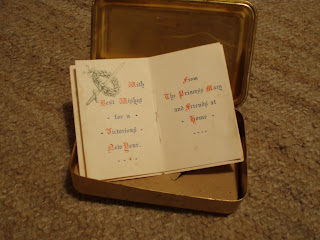 |
| 1917 on the way to war |
 |
| Silver leaves from Capetown |
September 26 , they marched 21 miles towards the war zone in warm sunny conditions, 27th, 23 miles and it went on until they arrived at Low Farm near menin Gate, Ypres and Railway Wood. Their war had really begun. They were attacked with mustard gas, bombed incessantly and shelled. Enemy planes were active day and night. Soldiers sent out to prepare roads for artillery were attacked and had to cease operating. However, a bus managed to carry the soldiers to Cavalry Farm eat of Ypres on 10th October. Here they had to make camp in the open in heavy rain and biting cold. The following day, they rested while the band played. Men sent out to tape the area ready for battle were shelled and the following day there was heavy bombing. And so it continued daily. The ground was pockmarked with bomb holes and many were caught in the mire. Wounded could not be extricated. The ground was an expanse of water and mud. So it went on, as the battallion moved towards Ploegstreet.
Roland had succumbed to trench fever, a condition caused by fleas which lived in the seams of clothing and carried disease. Washing was impossible under the conditions and many became ill, Roland desperately so. He suffered severe swelling all over his body as his kidneys struggled to work.
In mid December, he was transferred to hospital in France, then two weeks later, left for England. On 21 April, he embarked at Devonport on the hospital ship 'Suevic' bound for Australia.
Roland did not fight a long war, but the conditions took their toll on his health. Like many others, he was never really healthy again.

















